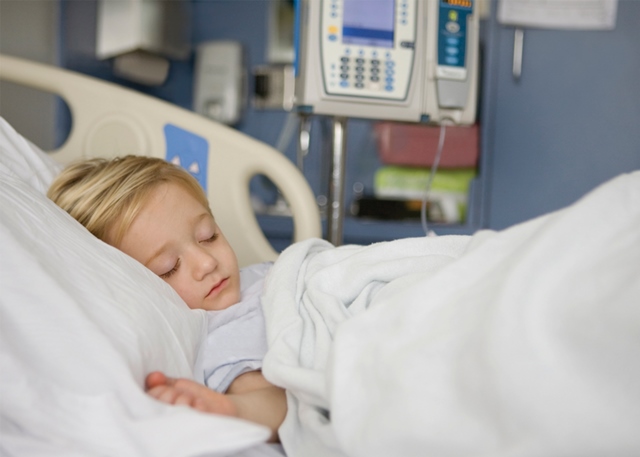
Unfortunately, the harrowing scene of doctors and nurses running with crash carts to a child’s bedside after an ‘unexpected’ code blue is a familiar one to most hospital workers. In 2002 Dr. Christopher Parshuram, a physician and safety scientist in the Department of Critical Care Medicine at The Hospital for Sick Children (SickKids) recognized that in most cases it was possible to identify children well before the immediate call for help was made. With the help of Kristen Middaugh, a paediatric intensive care nurse, he began careful research to see which vital signs could be relied upon to provide early identification of clinical deterioration in children.
“Through our research, and with the collaboration of 300 health care professionals and data from 5000 patients, the Bedside Paediatric Early Warning System (BedsidePEWSTM) was developed to help clinicians identify children who are clinically deteriorating, allowing medical teams the time they need to intervene and prevent the need for immediate assistance from a resuscitation team,” explains Dr. Parshuram.
In 2009, they published their results in Critical Care highlighting the development and initial validation of the Bedside Paediatric Early Warning System (BedsidePEWSTM). In Critical Care 2011, they published evidence that BedsidePEWSTM can improve outcomes.
Recognizing the need for appropriate dissemination of BedsidePEWSTM, and the requirement to develop a robust electronic form of BedsidePEWSTM, SickKids and MaRS Innovation collaborated to establish Bedside Clinical Systems (BCS).
The program digitally logs, charts, and evaluates seven vital sign items that are part of routine clinical assessments and then summarizes them into a single score. From the BedsidePEWSTM score, care providers can better match the level of care with the patient’s required needs, thereby improving patient outcomes and reducing the number of urgent calls, code blue incidents, and related deaths.
“Identifying at-risk patients is significant since approximately 5,000 children in North America experience a code blue event each year, from which too many children die or sustain neurological deficit. BedsidePEWSTM hopes to improve outcomes for these patients and their families,” says Dr. Parshuram.
Hospitals benefit from the program through improved quality and safety in care delivery, improved communication among clinical team members, and reduced costs as a result of lowering the number of code blue events and minimizing transfers to a paediatric intensive care unit between and within hospitals.
BedsidePEWSTM is currently being used in a Canadian, US, and New Zealand hospital. Unlike other systems, BedsidePEWSTM can be used on all pediatric patients regardless of their condition. It is the only FDA cleared system that demonstrates the strength of science and technology which were validated through a five-year clinical study.
Nurses who have used BedsidePEWSTM as a system of care note an elevation in their critical thinking skills. Through continued use of the system, nurses can recognize the score trends that are acceptable for specific patient populations and when their patient’s score falls out of that predictable trend, they understand the need to immediately take action to ensure that a patient’s condition does not deteriorate. A nurse might determine that they need to call for additional help and involve colleagues or other teams which can be intimidating at times in environments where staff are stressed and overworked. It can be especially intimidating for clinicians when monitoring patients for cardiopulmonary issues, as they must rely on vital signs and intuition to support their decision to call for help or else wait for obvious signs of deterioration, which is often too late for the patient.
Before using BedsidePEWSTM nurses often talked about a ‘gut feeling’ they had that a patient was at-risk for deterioration. With the BedsidePEWSTM system, nurses now have a tool that helps objectify their clinical assessment and confidently communicate their concern.
Physicians have noted that the BedsidePEWSTM helps to foster teamwork as the system creates a shared language for nurses and physicians that helps them identify patients that are deteriorating and plan how best to use their resources.
With increasing international interest in BedsidePEWSTM BCS is planning to take the system to any hospital that provides in-patient care for children. At King’s College Hospital in London, UK, the nurses have the found that the system improves the continuity of care for patients when they are transferred to the recovery areas from inpatient wards. With recovery staff that are not necessarily trained in paediatrics, Kings College staff find the program’s age-specific charts invaluable.
For hospitals without electronic charting systems, BCS offers a paper documentation solution so hospitals can improve paediatric care immediately as they eventually transition to an electronic solution. Both the Stollery Children’s Hospital in Alberta and a Children’s Hospital in New Zealand have implemented the paper BedsidePEWSTM solution.
For more info visit: www.bedsideclinical.com

